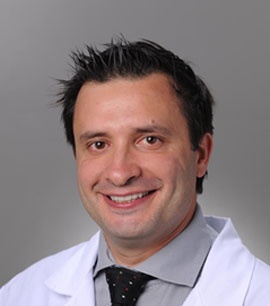Why Do I Need a Dental CT Scan? Is It Really Safe?
Before an oral surgeon performs an invasive procedure, it is important for the practitioner to be fully aware of the positioning of the structures that lie beneath the soft tissue of your mouth. The location of your dental nerves, the positioning of nearby teeth and the structure of your jawbone can play important roles in how the procedure will be performed.
To obtain a surgical view of the associated area before surgery begins, dental CT scans are used. Although, dental CT scans are quite harmless, you may have concerns about being exposed to the radiation associated with 3-dimensional imaging. After all, high levels of radiation have been linked to a higher incidence of cancer.
Still, unlike medical CT scans, dental CT scans do not involve high radiation levels. There is a significant difference between the two types of scans. Here are the facts:
Medical CT scans use more radiation.
Many people think that a scan is still a scan, regardless of whether it is dental or medical. Both scans do reveal the nature and structure of underlying tissue. However, they use different amounts of radiation.
A medical CT scan of the mouth can expose you to the same amount of radiation as about 162 chest x-rays. On the contrary, a dental CT scan of the same area will limit your exposure to the amount of radiation equal to only one chest x-ray. This is the same amount of radiation exposure that you would obtain by flying from Los Angeles to New York City.
Why is the difference so great? During a medical CT scan, the scanning machine revolves around your head to obtain images of slices of tissue. Multiple revolutions are needed to obtain enough slices to form the complete, readable image. For dental CT scans, all of the imagery is obtained through a single beam rotation that is cone-shaped. Thus, the radiation exposure is minimized, but the same information that would be revealed from a medical CT scan is still obtained.
Dental CT scans are needed to avoid dental nerves and other sensitive areas.
As a dental prosthetic device, such as a dental implant, is installed, it is surgically placed inside your jawbone, beneath the soft tissues of your mouth. The positioning of the device must be exact. Sensitive areas, such as dental nerves, especially in the lower jaw, must be avoided during the procedure. If a dental nerve is directly hit or damaged during the surgery, you may experience numbness and pain for months. Consequently, it is important for your oral surgeon to know the exact location of your nerves before he or she ever starts the procedure.
Dental professionals follow the ALARA protocol.
Dental professionals, such as those at Dream Dental, adhere to the as low as reasonably achievable (ALARA) protocol, when it comes to radiation levels. Practitioners who prescribe to ALARA expose their patients to as little radiation as possible to obtain the information needed for a correct diagnosis. Thus, before Dream Dental professionals perform an oral surgery, they may obtain Dental CT scans to reveal the exact anatomy of your mouth. Nevertheless, the minimal amount of radiation possible will be used during the scan.
During invasive dental procedures, dental CT scans are invaluable. They help make your dental treatment more effective and more efficient without the radiation risks associated with medical scans. To learn more about dental CT scans and how they can help ensure that your treatment occurs safely, call the Dream Dental office.

